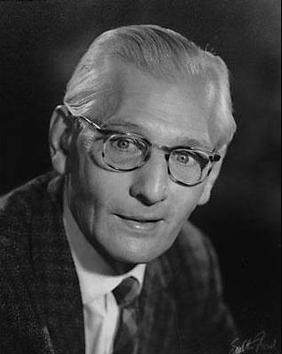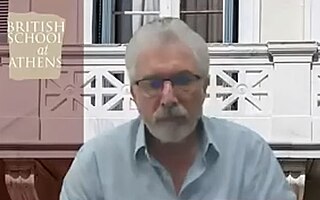Related Research Articles

Andrew Colin Renfrew, Baron Renfrew of Kaimsthorn, is a British archaeologist, paleolinguist and Conservative peer noted for his work on radiocarbon dating, the prehistory of languages, archaeogenetics, neuroarchaeology, and the prevention of looting at archaeological sites.

The Red "Lady" of Paviland is an Upper Paleolithic partial male skeleton dyed in red ochre and buried in Wales 33,000 BP. The bones were discovered in 1823 by William Buckland in an archaeological dig at Goat's Hole Cave which is a limestone cave between Port Eynon and Rhossili on the Gower Peninsula, near Swansea in south Wales. Buckland believed the skeleton was a Roman era female. Later, William Solace examined Goat's Cave Paviland in 1912. There, Solace found flint arrow heads and tools and correctly concluded that the skeleton was in fact a male hunter-gatherer or warrior during the last Ice Age. Over the last 100 years, more advanced dating procedures have shifted the age from the Mesolithic period to the Palaeolithic era of the last Ice Age.

Creswell Crags is an enclosed limestone gorge on the border between Derbyshire and Nottinghamshire, England, near the villages of Creswell and Whitwell. The cliffs in the ravine contain several caves that were occupied during the last ice age, between around 43,000 and 10,000 years ago. Its caves contain the northernmost cave art in Europe. The evidence of occupation found in the rich series of sediments that accumulated over many thousands of years is regarded as internationally unique in demonstrating how prehistoric people managed to live at the extreme northernmost limits of their territory during the Late Pleistocene period.

Acheulean, from the French acheuléen after the type site of Saint-Acheul, is an archaeological industry of stone tool manufacture characterized by the distinctive oval and pear-shaped "hand axes" associated with Homo erectus and derived species such as Homo heidelbergensis.

Sir William Boyd Dawkins was a British geologist and archaeologist. He was a member of the Geological Survey of Great Britain, Curator of the Manchester Museum and Professor of Geology at Owens College, Manchester. He is noted for his research on fossils and the antiquity of man. He was involved in many projects including a tunnel under the Humber, a Channel Tunnel attempt and the proving of coal under Kent.

Kents Cavern is a cave system in Torquay, Devon, England. It is notable both for its archaeological and geological features. The cave system is open to the public and has been a geological Site of Special Scientific Interest since 1952 and a Scheduled Ancient Monument since 1957.

The Creswellian is a British Upper Palaeolithic culture named after the type site of Creswell Crags in Derbyshire by Dorothy Garrod in 1926. It is also known as the British Late Magdalenian. According to Andreas Maier: "In current research, the Creswellian and Hamburgian are considered to be independent but closely related entities which are rooted in the Magdalenian." The Creswellian is dated between 13,000 and 11,800 BP and was followed by the most recent ice age, the Younger Dryas, when Britain was at times unoccupied by humans.

Charles Francis Christopher Hawkes, FBA, FSA was an English archaeologist specialising in European prehistory. He was Professor of European Archaeology at the University of Oxford from 1946 to 1972.

Es-Skhul or the Skhul Cave is a prehistoric cave site situated about 20 kilometres south of the city of Haifa, Israel, and about 3 km (1.9 mi) from the Mediterranean Sea.

Paleolithic religions are a set of spiritual beliefs and practices that are theorized to have appeared during the Paleolithic time period. Paleoanthropologists Andre Leroi-Gourhan and Annette Michelson believe unmistakably religious behavior emerged by the Upper Paleolithic, before 30,000 years ago at the latest, but behavioral patterns such as burial rites that one might characterize as religious — or as ancestral to religious behavior — reach back into the Middle Paleolithic, as early as 300,000 years ago, coinciding with the first appearance of Homo neanderthalensis and possibly Homo naledi.
Paul Gerard Bahn, is a British archaeologist, translator, writer and broadcaster who has published extensively on a range of archaeological topics, with particular attention to prehistoric art. He is a contributing editor to Archaeology magazine. With Colin Renfrew, he wrote the popular archaeology textbook Archaeology: Theories, Methods and Practice.
Sir Paul Anthony Mellars was a British archaeologist and professor of prehistory and human evolution at the University of Cambridge.

The Robin Hood Cave Horse is a fragment of rib engraved with a horse's head, discovered in 1876, in the Robin Hood Cave in Creswell Crags, Derbyshire. It is the only piece of Upper Paleolithic portable art showing an animal to have been found in Britain. It is now in the British Museum, but normally not on display. Between 7 February and 26 May 2013 it was displayed in the exhibition at the British Museum Ice Age Art: Arrival of the Modern Mind. A replica of the artifact is displayed at the Creswell Crags Museum.

The Pinhole Cave Man or Pin Hole Cave Man is the common name for an engraving of a human figure on a woolly rhinoceros rib bone dating to the Upper Paleolithic that is now in the British Museum. In the 1920s, a woolly rhinoceros rib that was broken at both ends was found in Pin Hole Cave, Creswell Crags, Derbyshire, England.
John Joseph Wilkes, is a British archaeologist and academic. He is Emeritus Yates Professor of Greek and Roman Archaeology at University College London.
Clive Stephen Gamble, is a British archaeologist and anthropologist. He has been described as the "UK’s foremost archaeologist investigating our earliest ancestors."

Donald John Logan Bennet,, known as John Bennet, is a British archaeologist, classicist, and academic, who specialises in the Aegean civilisations. He has been Professor of Aegean Archaeology at the University of Sheffield since 2004, and was Director of the British School at Athens from 2015 to 2022. He previously taught at the University of Cambridge, the University of Wisconsin–Madison and the University of Oxford.
Caroline Rosa Wickham-Jones MA MSocSci FSA HonFSAScot MCIfA(25 April 1955 – 13 January 2022) was a British archaeologist specialising in Stone Age Orkney. She was a lecturer at the University of Aberdeen until her retirement in 2015.
Roger Michael Jacobi was a British archaeologist specialising in Palaeolithic and Mesolithic Britain. Known for his encyclopaedic knowledge of British prehistory, Jacobi authored several key synthetic volumes and worked to catalogue, sequence and reanalyse collections from across Britain and northwestern Europe. Sections of his extensive personal archive were posthumously published as the Palaeolithic and Mesolithic Artefact (PaMELA) database. He studied archaeology at Jesus College, Cambridge, and held positions at Lancaster University, the University of Nottingham, and the British Museum.

Gouy Cave is a cave with engravings dating to the paleolithic era in Gouy, France. It has the northernmost paleolithic cave art found in France.
References
- 1 2 3 4 5 "Prof Paul Pettitt". Department of Archaeology. Durham University. Retrieved 11 September 2015.
- ↑ Pettitt, Paul Barry (25 May 1999). "Tool reduction models, primary flaking, and lithic assemblage variability in the Middle Palaeolithic of southwest France". Newton Library Catalogue. University of Cambridge. Retrieved 11 September 2015.
- ↑ "Staff profile: Professor Paul Pettitt". durham.ac.uk. Durham University. 2023. Retrieved 28 August 2023.
- ↑ "Paul Pettitt". The Institute of Archaeology. The Hebrew University of Jerusalem. Retrieved 5 January 2023.
- ↑ "Staff profile: Professor Paul Pettitt". Durham University. Archived from the original on 5 January 2023. Retrieved 5 January 2023.
- ↑ "Return to Kent's Cavern: New excavations in Britain's oldest Scheduled Ancient Monument". Current Archaeology. No. 262. 6 December 2011. Retrieved 12 September 2015.
- ↑ "Rare beasts that roamed the ancient caverns". Western Morning News. 14 April 2011. Retrieved 12 September 2015.
- ↑ "World Archaeology Editorial board". Taylor and Francis Online.
- ↑ "Fellows Directory". Society of Antiquaries of London. Retrieved 11 September 2015.